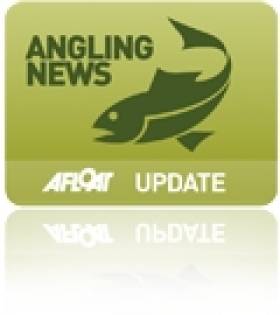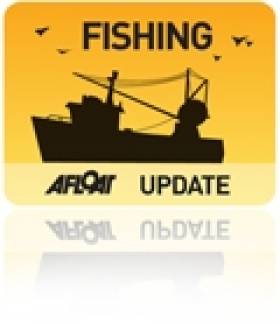Displaying items by tag: Bluefin Tuna
Bluefin Tuna Anglers Should Put Conservation First
#Angling - Inland Fisheries Ireland (IFI) has urged marine sport anglers to put conservation first when it comes to the endangered bluefin tuna - particularly those in the tuna hotspot of Donegal Bay.
In a statement, the national fisheries body said: "For a long time, Ireland has been recognised for its marine sport fishing. The vast variety and quality of our angling has given the country a reputation of which we are justly proud."
Bluefin tuna catches by the commercial fishing fleet targeting other species were first reported in the 1980s, and such reports became quite common on the west coast by the mid 1990s, though no fish fell to rod and line until 2000.
The following year, a new Irish and European record was set by Adrian Mulloy, fishing with skipper Michael Callaghan. On the 5 October 2001 Adrian caught a fish of 968lbs near Rathlin O’Beirne Island.
In 2002 and 2003, more bluefin tuna were caught and one boat contributed to the 'Tag a Giant' programme run by Stanford University and supported in Ireland by Bord Iascaigh Mhara (BIM).
"While these were heady days for big game fishing in Ireland, it all happened against the backdrop of a global decline in a species that is now famously threatened by overfishing," said IFI.
In 2012, European regulations governing the harvesting of bluefin tuna were changed as the species became even more endangered.
Ireland does not have a bluefin tuna quota, and for this reason "no allocation is available for sports or recreational fishing," said the IFI statement. "Furthermore, there is no facility in Irish fisheries regulations to permit angler-caught bluefin tuna to be landed into any Irish port, and there is no provision for the sale of these fish.
"While IFI would love to see the development of a sustainable fishery for this wonderful species, given the continued significant decline of the species and the fragile nature of the stock, the key imperative has to be one of conservation."
Giant Bluefin Tuna Caught Off Kerry, Cork Coasts
#FISHING - Dingle fishermen trawling for tuna off the south-west coast of Ireland found a big surprise in their nets this week in the form of an enormous 2-metre-long bluefin.
As The Irish Times reports, the Atlantic bluefin is considered one of the big game fish and is highly sought-after for top-quality sushi, a demand that has led to its adding to the endangered species list.
Strict quotas have been placed on bluefin for fishermen who normally trawl for albacore tuna - but the Dingle boats Fiona K and the Atlantic Venture were lucky that their unexpected catch was within the 1% they are allowed each year.
The 140kg tuna is set to end up in shops and restaurants in Dingle and throughout Kerry for much less than one would pay for such fish in Japan, where a bluefin double the size went for over €600,000 earlier this year.
Meanwhile, an even bigger bluefin was snappped up by eager fish lovers at Limerick's Milk Market last weekend.
The 250kg goliath was caught 600 miles off Castletownbere in Co Cork by local fisherman JD Sullivan, according to the Limerick Leader.
“The tuna migrate up the west coast of Ireland around this time of year, but very few of them are caught,” said Paul Cusack of Rene Cusack’s fish shop in the market.
It's leading some to question if there's something in the water, with news from Angling Times of a giant 189lb common skate recently caught off the coast of Northern Ireland.






























































